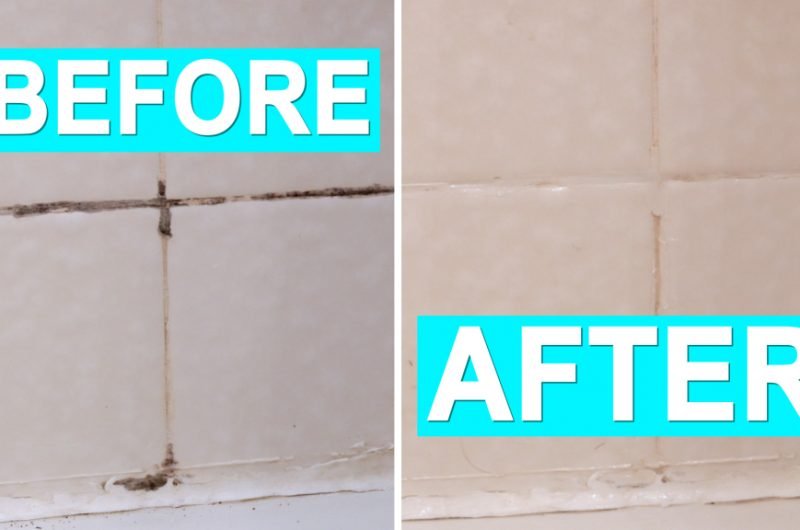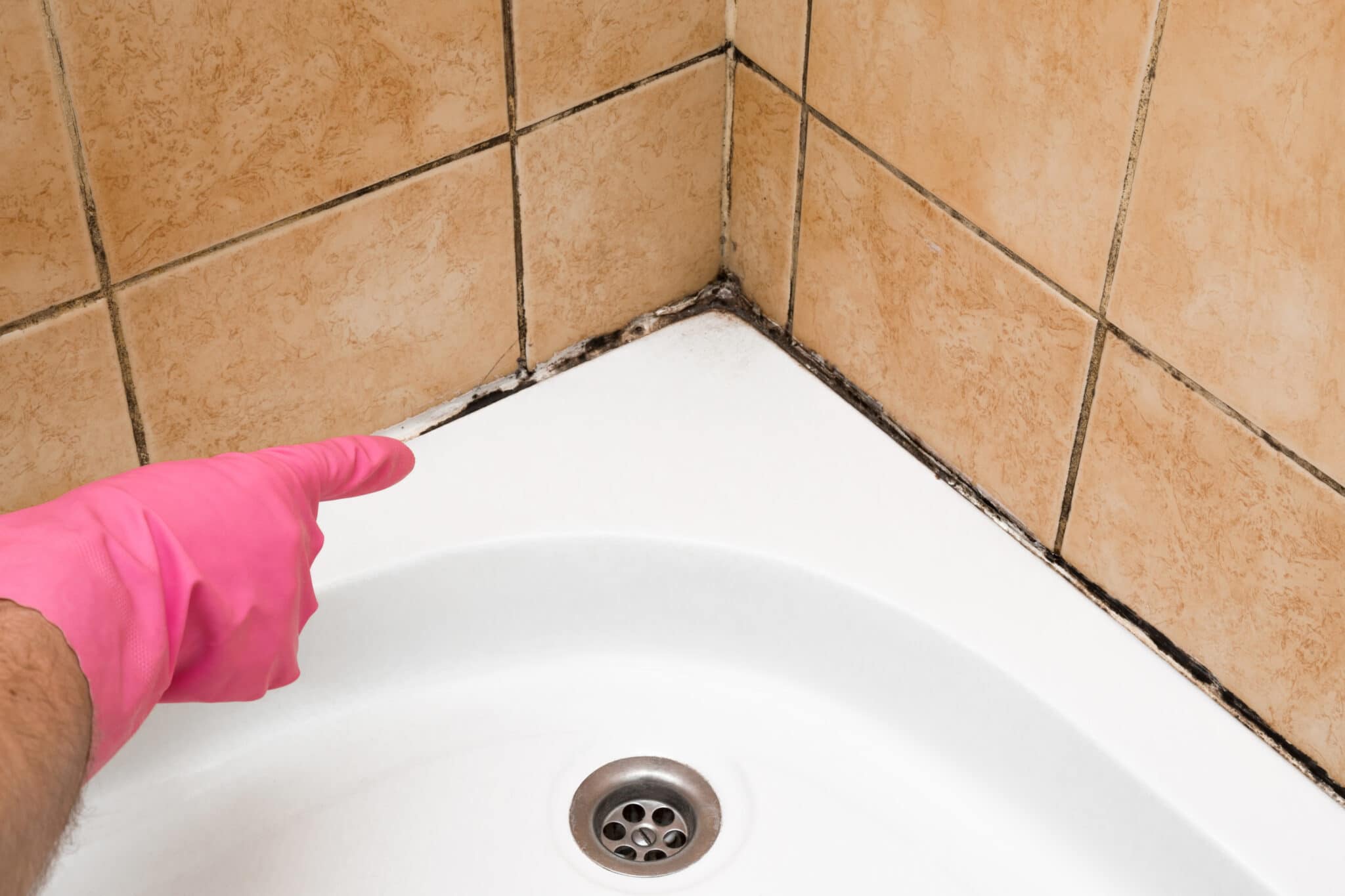To get rid of mould in your bathroom, mix equal parts of water and vinegar in a spray bottle. Spray the affected areas, let it sit for 10 minutes, then scrub and rinse.
Mould thrives in damp, warm environments like bathrooms, making it a common issue. It can lead to health problems and damage surfaces if not addressed promptly. Regular cleaning and preventive measures can minimize mould growth. Use ventilation fans during and after showers to reduce humidity.
Consider applying mould-resistant paint and sealants on surfaces prone to moisture. By taking these steps, you can maintain a clean, healthy bathroom environment and prevent future mould infestations. Prioritize a thorough cleaning routine to keep your bathroom fresh and mould-free.

Credit: www.inthekitchenwithmatt.com
The Hidden Enemy: Mould In Your Bathroom
Mould is a common problem in many bathrooms. It thrives in damp and humid conditions. This sneaky fungus can grow unnoticed, causing issues for both your home and health. Understanding mould’s preferences helps in preventing its growth.
Why Mould Loves Bathrooms
Mould finds bathrooms to be a perfect home. Here are some reasons:
- High Humidity: Showers and baths create steam.
- Limited Airflow: Small spaces trap moisture.
- Dark Corners: Mould thrives in shadows.
- Organic Material: Soap and hair provide food.
Health Risks Associated With Bathroom Mould
Mould can pose serious health risks. It affects both adults and children. Here are some common health issues:
| Health Issue | Symptoms |
|---|---|
| Allergies | Sneezing, coughing, itchy eyes |
| Respiratory Problems | Difficulty breathing, wheezing |
| Skin Irritation | Rashes, redness |
| Sinus Infections | Facial pain, headache |
Keep your bathroom mould-free to protect your health. Regular cleaning helps reduce risks. Make sure to ventilate the space well. Use exhaust fans during showers.
Early Detection: Spotting Mould Before It Spreads
Detecting mould early is key. It helps prevent extensive damage. Regular checks can keep your bathroom safe and healthy. Mould thrives in damp areas, making bathrooms prime targets. Knowing the signs can save time and effort.
Common Signs Of Mould
Identifying mould early can be simple. Look for these common signs:
- Musty Odor: A strong, unpleasant smell.
- Discoloration: Dark spots on walls or ceilings.
- Peeling Paint: Paint that bubbles or flakes.
- Condensation: Excess moisture on mirrors or windows.
Pay attention to these signs. They indicate mould presence. Address them quickly to avoid further issues.
Typical Areas For Mould Growth In Bathrooms
Mould can grow in several bathroom spots. Here are the most common areas:
| Area | Description |
|---|---|
| Shower and Bathtub | High humidity and water exposure create a perfect environment. |
| Sink and Countertops | Water splashes and spills can lead to mould growth. |
| Toilet Base | Leaks or spills often go unnoticed, promoting mould. |
| Bathroom Grout | Moisture can seep into grout lines, fostering mould. |
| Ceiling and Walls | Poor ventilation can cause moisture buildup. |
Check these areas regularly. Early detection prevents serious mould problems.
Prevention: Key Strategies To Keep Mould At Bay
Mould in the bathroom can be a nuisance. Preventing its growth is essential. Simple strategies can keep your bathroom clean and healthy.
Improving Ventilation
Good ventilation stops moisture build-up. Here are ways to improve airflow:
- Open windows while showering.
- Install exhaust fans.
- Keep doors open after use.
These actions help air circulate. This reduces dampness and keeps mould away.
Regular Cleaning Habits
Cleaning your bathroom regularly is crucial. Establish a cleaning routine:
- Wipe surfaces with a mould-resistant cleaner.
- Scrub tiles and grout weekly.
- Change shower curtains every few months.
Use a squeegee after each shower. This removes excess water. A clean bathroom is less likely to grow mould.
Moisture Control Techniques
Controlling moisture is vital. Follow these tips:
| Technique | Description |
|---|---|
| Use a Dehumidifier | Reduces humidity levels in the air. |
| Seal Grout | Prevents water from soaking into grout lines. |
| Fix Leaks | Repair any dripping taps or pipes. |
These techniques help keep moisture levels low. A dry environment discourages mould growth.
Natural Solutions: Eco-friendly Mould Removal
Getting rid of mould in your bathroom doesn’t have to involve harsh chemicals. Eco-friendly solutions are effective and safe for your home. Here are some natural methods that can help eliminate mould and keep your bathroom fresh.
Vinegar And Water Solution
Vinegar is a powerful natural cleaner. It can effectively kill mould spores. Here’s how to use it:
- Mix equal parts of white vinegar and water in a spray bottle.
- Spray the solution directly on the affected areas.
- Let it sit for at least one hour.
- Wipe away the mould with a cloth or sponge.
Vinegar also helps prevent mould from returning. Its acidity makes it hard for mould to thrive.
Baking Soda And Its Uses
Baking soda is another amazing natural solution. It’s gentle yet effective against mould. Here’s how to use it:
- Mix 1/2 cup of baking soda with 1 cup of water.
- Pour the mixture into a spray bottle.
- Spray the mouldy area and scrub with a brush.
- Rinse with water and wipe dry.
Baking soda not only cleans but also helps eliminate odours. It’s safe for your family and pets.
Tea Tree Oil’s Effectiveness
Tea tree oil is a natural antifungal. It works wonders against mould. Follow these steps:
- Mix 1 teaspoon of tea tree oil with 1 cup of water.
- Transfer the mixture to a spray bottle.
- Spray the affected areas generously.
- Do not rinse. Let it dry naturally.
Tea tree oil has a strong scent. This scent fades quickly but keeps mould away. Regular use can prevent mould from returning.
Chemical Warfare: When To Use Commercial Mould Removers
Mould can thrive in damp areas like bathrooms. Sometimes, natural methods fail. In these cases, commercial mould removers can help. They are powerful and effective at eliminating stubborn mould. Use them wisely and safely.
Selecting The Right Product
Choosing the right mould remover is crucial. Here are key points to consider:
- Type of Mould: Identify the mould type. Different products target specific moulds.
- Surface Compatibility: Ensure the remover is safe for your bathroom surfaces.
- Active Ingredients: Look for effective ingredients like bleach, hydrogen peroxide, or vinegar.
- Eco-Friendly Options: Choose green products for a safer choice.
Consider checking reviews and ratings. Trusted products often have positive feedback.
Safety Measures For Chemical Use
Safety is vital when using chemical mould removers. Follow these precautions:
- Wear Protective Gear: Use gloves, masks, and goggles.
- Ventilate the Area: Open windows or use fans.
- Read Labels: Follow instructions carefully for best results.
- Keep Away from Children and Pets: Store products safely out of reach.
Always dispose of chemicals properly. Follow local regulations for safe disposal.

Credit: m.youtube.com
Diy Mould Removal: Step-by-step Guide
Mould in the bathroom is a common problem. It thrives in damp areas. Removing it yourself can save time and money. Follow this simple guide for effective mould removal.
Preparing Your Space
Before starting the cleaning process, gather your supplies:
- Rubber gloves
- Face mask
- Spray bottle
- White vinegar or bleach
- Scrub brush or sponge
- Old towels or rags
- Bucket
Next, prepare the area:
- Ventilate the bathroom. Open windows and doors.
- Remove any items from shelves.
- Cover surfaces with old towels.
The Cleaning Process
Now, you’re ready to clean. Follow these steps:
- Fill the spray bottle with white vinegar or a bleach solution (1 part bleach, 10 parts water).
- Spray the affected areas generously.
- Let it sit for 10-15 minutes.
- Scrub the area with a scrub brush or sponge.
- Rinse thoroughly with water.
- Dry the area with old towels or rags.
Check for any remaining mould. Repeat the process if necessary.
Post-cleaning Care
After cleaning, take steps to prevent mould from returning:
- Keep the bathroom well-ventilated.
- Use a dehumidifier if needed.
- Wipe down surfaces after showers.
- Regularly check for leaks.
Consider using mould-resistant paint for added protection. These simple measures will help keep your bathroom mould-free.
Professional Help: Knowing When To Call The Experts
Mould in the bathroom can be a serious issue. Sometimes, DIY methods aren’t enough. Knowing when to seek professional help is crucial. Experts can effectively remove mould and prevent its return.
Signs You Need Professional Removal
Watch for these signs that indicate the need for experts:
- Extensive Growth: Large patches of mould spread quickly.
- Persistent Odor: A musty smell that doesn’t go away.
- Health Issues: Allergies or respiratory problems worsen.
- Water Damage: Visible signs of water leaks or damage.
- Hidden Mould: Growth behind walls or under flooring.
Choosing A Mould Removal Service
Selecting the right mould removal service matters. Follow these steps:
- Check Credentials: Ensure they are licensed and insured.
- Read Reviews: Look for customer feedback online.
- Ask for Estimates: Get multiple quotes before deciding.
- Inquire About Methods: Ensure they use safe removal techniques.
- Follow-Up Services: Ask if they offer post-removal inspections.
Taking these steps will help you find qualified professionals.
Maintenance: Keeping Your Bathroom Mould-free
Maintaining a mould-free bathroom is essential for health and comfort. Regular care prevents mould growth and keeps surfaces clean. Follow these tips to ensure your bathroom remains fresh and safe.
Routine Cleaning Schedule
Establishing a cleaning routine helps eliminate mould before it starts. Here’s a simple schedule:
- Daily: Wipe down surfaces after use.
- Weekly: Clean tiles, sinks, and mirrors.
- Monthly: Scrub grout and check behind fixtures.
Use a mixture of vinegar and water for effective cleaning. This solution kills mould spores without harsh chemicals.
Long-term Humidity Control
Controlling humidity is crucial in preventing mould. Here are some effective methods:
- Keep windows open for ventilation.
- Use exhaust fans during and after showers.
- Install a dehumidifier in high-moisture areas.
Maintain indoor humidity levels below 50%. This will significantly reduce mould growth.
Regular Inspection Tips
Regular inspections help catch mould problems early. Follow these tips:
- Check for leaks under sinks and around toilets.
- Inspect caulk and grout for cracks.
- Look for discolored patches on walls and ceilings.
Address issues immediately to prevent larger mould problems. Early action keeps your bathroom safe and healthy.

Credit: www.reddit.com
Frequently Asked Questions
How Do I Permanently Remove Mold From My Bathroom?
To permanently remove mold from your bathroom, clean surfaces with a mixture of water and vinegar or bleach. Scrub thoroughly, then dry the area completely. Improve ventilation by using exhaust fans and opening windows. Regularly check for leaks and maintain low humidity levels to prevent future growth.
How Do You Get Rid Of Black Mould In The Bathroom?
To remove black mould in the bathroom, mix equal parts water and vinegar in a spray bottle. Spray the affected areas, let it sit for 10-15 minutes, then scrub with a brush. Rinse thoroughly and dry the area to prevent future growth.
Ensure proper ventilation to reduce humidity.
Is Bleach Or Vinegar Better To Kill Mold?
Vinegar is often better than bleach for killing mold. It penetrates porous surfaces effectively and inhibits future growth. Bleach may only remove surface mold but doesn’t prevent regrowth. Use vinegar for a safer, eco-friendly solution to mold problems.
How Do I Stop Mold From Growing In My Bathroom?
To stop mold in your bathroom, ensure proper ventilation by using exhaust fans. Keep surfaces dry by wiping down after use. Regularly clean with mold-fighting solutions. Seal any leaks promptly and maintain low humidity levels. Consider using mold-resistant paint for added protection.
Conclusion
Mould in the bathroom can be a persistent problem. Regular cleaning and proper ventilation are key to prevention. Use natural solutions like vinegar or baking soda for effective removal. Stay proactive to keep your bathroom fresh and healthy. A mould-free space enhances both hygiene and comfort.
Act now for a cleaner bathroom.
